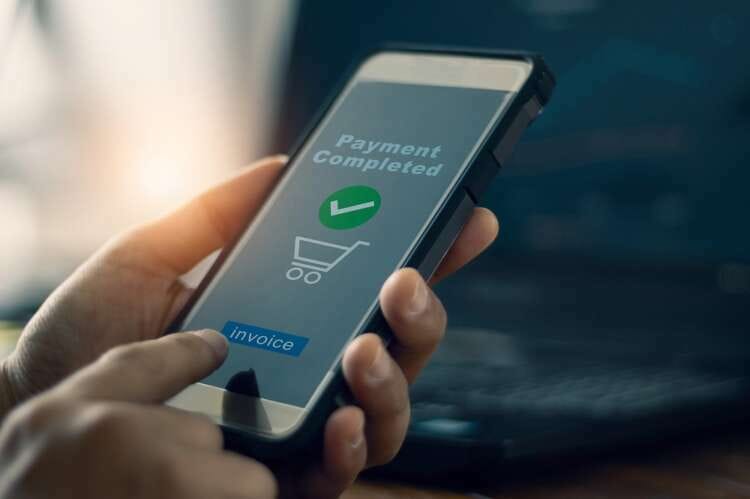
By Ralf Gladis, CEO, Computop
As the Christmas shopping season gets underway, more and more customers will be selecting Buy Now Pay Later (BNPL) options at the checkout, whether online or in-store. This simple solution allows them to purchase goods or services without needing to pay the complete amount immediately. In most cases, if the account is paid within 30 days or in an agreed number of instalments, they won’t incur any interest.
Little wonder then that online BNPL services are growing at a rate of 39% a year with market share predicted to double by 2023. This type of payment option particularly finds favour among younger shoppers who recognise the digital simplicity of what is, in effect, a shopping basket plug-in, which gives them the option to order and try on items, or send them back, before they are charged for them. It is convenient, widely available and has no impact on their credit score, which is why research by Bain found that amongst respondents aged 18-24 more used BNPL (42%) than credit cards (31%).
And it’s not just online that BNPL is growing. Consumers signed up with Swedish firm Klarna, one of the UK’s biggest providers, can ask to use their services at the till in brick-and-mortar stores including Halfords, Marks & Spencer and Anthropologie.
What makes BNPL work well is that the cost for offering the service is not absorbed by consumers. Instead, retailers pay commission to the BNPL service provider in return for higher sales. It has been proven that with BNPL as an option at checkout, basket sizes are bigger and basket abandonment is lowered. Customers believe they can better manage their cashflow and are more inclined to follow through on a purchase if they don’t have to pay everything upfront.
What are the downsides?
With respected retailers behind the scheme and banks like Monzo offering BNPL to millions of customers, it would appear to have powerful backing, but that doesn’t mean it is without risk. According to the Moneysavingexpert website, credit limits are set per BNPL provider, and (unless they are a bank, such as Monzo, which is regulated and therefore reports credit reference agencies so other lenders can see that a customer is using its scheme) none of them will know how much has been borrowed elsewhere, meaning the total debts across several providers can accumulate. In addition, with most providers, payments will only be free if they are paid on time. While a thorough or ‘hard’ credit check is unlikely, and therefore credit is easier to come by, the onus is still on the shopper to repay in full.
While this is not a problem for retailers, it could potentially be for consumers. A recent report in the Guardian said that UK shoppers had accumulated a £4.1 billion debt in BNPL deals, describing it as an ‘opaque debt bubble’. It quoted a report from Credit Karma that found outstanding balances with BNPL companies averaged £538 for each user.
Introducing regulatory change
In Germany, BNPL has been successfully operating for over a decade without any ill-effect on customers. In the UK, however, the payment mechanism has grown in popularity whilst, for the most part, being exempt from the requirements of the Consumer Credit Act and unregulated by the Financial Conduct Authority. Until now, that is.
While acknowledging that products such as BNPL can be useful, there is concern in government circles that in some circumstances they can also be detrimental, and it would be constructive for consumers and the wider credit market to bring in appropriate regulation.
A review has been carried out into change and innovation in the unsecured credit market by Chris Woolard, former interim Chief Executive of the FCA, and a consultation opened on the creation of a proportionate approach to the regulation of BNPL product. This will close in January 2022. In a letter from Chris Woolard to the Economic Secretary of the Treasury he stated that data shared with the FCA by some of the main BNPL providers showed the volume of transactions using BNPL had more than tripled between January and December 2020, and while average single transaction values are relatively low (between £65-£75), the popularity of the product is quickly increasing and the potential consequences for harm are therefore growing. He also expressed concern about multiple transactions using multiple providers being possible without affordability checks so that it would be relatively easy to accrue around £1,000 of debt without that being visible to credit reference agencies or to all mainstream lenders.
While the introduction of regulation sounds like it could constrain BNPL, in fact it is more likely to mitigate the potential pitfalls and deliver numerous protections for consumers, particularly if they use smaller BNPL providers. After all, it could mean having all the protection you would expect from using a bank to borrow money, while still getting the loan interest-free as long as you pay on time. Providers will need to carry out more stringent affordability checks, the ability to complain will come under the remit of the Financial Ombudsman, which has the power to intervene and rectify situations, and Section 75 protection, valuable to customers, will also kick in.
This will also have a beneficial knock-on effect on retailers, many of whom feel that regulation will make customers more aware of the advantages and disadvantages of the scheme, enabling them to make informed choices.
Over the next few weeks, many consumers will be making choices about how to pay for their Christmas purchases, and the lure of BNPL will be strong. In 2022, however, there’s no denying that when it comes to managing the purse strings, a little regulatory constraint will go a long way


